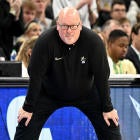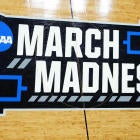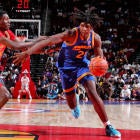Download the CBS Sports App today and get instant tournament news and alerts, plus play Brackets!
How many upsets to pick? That is the question. If you’re in an office pool with a few buddies at work that wouldn’t know Butler from Alfred in the Batman movies, you can pick a lot of chalk and almost assuredly win. But to really compete at the top of CBSSports.com’s bracket challenge or an entire building of colleagues pretending to work for the next few weeks, getting the upsets right is absolutely essential.
So, round by round, let’s run through how you should pick your bracket
Pick either a 14 or a 15 seed
Start your bracket with the easy work. Fill in all of the 1 seeds. They always win. You’ve heard the stat a million times. But, straight away let’s get to the toughest risk. Over the last 10 years, 11 teams that were either a 2 or 3 seed lost in the first round. Picking the wrong one could be devastating to your bracket. These teams could either lose in the first round or get to the championship game. So, I’d choose the team you think least likely to kill you down the road.
My pick: No. 14 Iona beats No. 3 Oregon
Pick two 11 seeds
Next, everyone talks about the 12 seeds as the upsets to pick, and sure, you can at least pick one. But since 2007, No. 6 seeds are 20-20 against 11 seeds. So, you can comfortably pick two No.11 seeds. Another rule: You should make one of these a team that wins in the “First Four.” Since the group of games was added in 2011, one team in the play in games advanced to the Round of 32.
My picks: Either No. 11 Wake Forest or No. 11 Kansas State over Cincinnati. No. 11 Xavier over No. 6 Maryland
Pick three of the eight 10 or 12 seeds
As for the aforementioned No. 12 seeds. They’re 16-24 in the round of 12 in the last 10 years. I’d combine it with another stat. The 10 seeds are 15-25 in that same time period. So I’d take three out of the eight 10 or 12 seeds to advance. A good way to pick which teams is based on their offensive success. Can the team get hot for a game to pull off an upset? This points to No. 10 Oklahoma State. They’re the best team in America in offensive effienciency per KenPom.com.
My picks: No. 10 Oklahoma State over No. 7 Michigan. No. 10 Wichita State over No. 7 Dayton. No. 12 Middle Tennessee over No. 5 Minnesota.
Pick one of the 13 seeds
On average there are seven double-digit upsets per year. So you still have one left to pick. And historically, it’s a 13 over a 4. The 13 seeds are 8-32. Generally, that’s one per tournament. The lowest rated KenPom 4 seed is Butler at No. 26.
My pick: No. 13 Winthrop over No. 4 Butler
Distribution of your upsets by region
These picks also meet one of the other rules of picking upsets. How many in a region? Obviously, you could pick five double-digit seeds in one region. But that’s not how they’ve played out over the years. Eight regions of the 40 played since 2007 have had zero upsets. It’s hard to not pick one, but in all likelihood, there will be chalk in an entire bracket. Eleven regions have had one upset. Ten regions have had two upsets. So you can, on average, pick regions with zero, one and two upsets. Then, pick one with three or four. There have been five with three upsets and six with four upsets in the last 10 years. So that’s where you can go conservative or aggressive with how you want to do it.
This is what history tells us. But, as any who’s watched a single tournament game would know: There’s no predicting the madness of March.




















